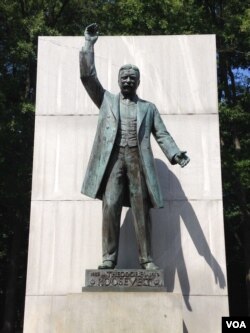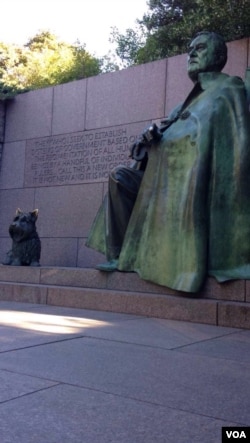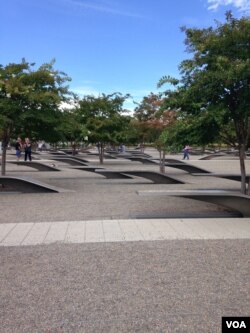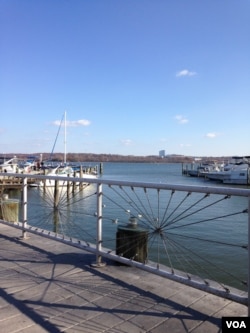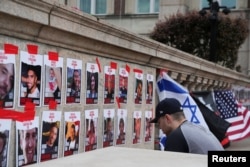Student Union
Have Metro, Will Travel: A Student's Guide to D.C.

Why not D.C.?
Washington, D.C. was built on a strategically chosen plot of land on the Potomac River. Contrary to popular belief, it was not built on a swamp. It was designed by French-born, American designer and engineer Pierre Charles L’Enfant, whom Washington.org says, "Presented a vision for a bold, modern city featuring grand boulevards" reminiscent of Paris.
Founded in 1790, the District was a compromise between Alexander Hamilton and Thomas Jefferson, who wanted the Capital in different places. (Jefferson wanted "the capital placed in a location friendly to slave-holding agricultural interests," according to Washington.org.)
L'Enfant's vision lives on successfully, and D.C. today is not only home to American government, but also to incredible architecture, beautiful green spaces, monuments and more.
If you are planning a trip to D.C. to experience American history and culture, (and, of course, take that incredible tourist photo of touching the tip of the Washington Monument), there are a ton of ways to enjoy it that are fairly inexpensive. Free parks and monuments dot the landscape of the city.
Here are six places in D.C. easily accessible by public transit.
Theodore Roosevelt Island
Theodore or "Teddy" Roosevelt Island is an island in the middle of the Potomac honoring the 26th President of the United States. According to the National Parks Service it's about 88.5 acres of woodlands. You can walk around the entire island to see wildlife and beautiful views of the Potomac. In the middle, there is a statue of Roosevelt himself. If you are tired of the city itself, this island is a perfect getaway into nature that isn't totally out of the way. The views of Georgetown are lovely.
Cost: Free
Closest Metro Station: Rosslyn on the Blue, Orange or Silver lines.
Franklin Delano Roosevelt Memorial
Yes, another Roosevelt. The Roosevelts have some of the most gorgeous memorials in D.C. This one is dedicated to the 32nd President of the United States, and each of the four terms of his presidency has its own room. With walls covered with some of Roosevelt's most inspirational quotes -- "The only thing we have to fear is fear itself" -- and statues of Americans listening to Roosevelt's radio addresses or standing in bread lines, the memorial is a trip through time. If you're in D.C. for longer than a few days, it's also a great place to study. Sit by Roosevelt's statue and watch as people touch his finger for good luck. (And maybe slyly do the same on your way out. Hey, we could all use some luck!)
Cost: Free
Closest Metro Station: Smithsonian on the Blue, Orange or Silver lines.
Freedom Plaza
While I was exploring D.C., I decided to walk through Pershing Park, and came upon this plaza by happenstance. On the ground there are quotes from American luminaries about D.C., along with a giant stone map of the Capital. You may not be able to step inside of the real White House, but you can step on top of it here!
Cost: Free
Closest Metro Station: Metro Center on the Red, Blue, Silver or Orange lines, or Federal Triangle on the Blue, Orange or Silver lines.
The National 9/11 Pentagon Memorial
If you are looking to honor those who lost their lives on 9/11 at the Pentagon, the National 9/11 Pentagon Memorial in Arlington, Virginia is a good place to start. The memorial is organized by the age of the victim, each victim receiving their own bench to commemorate their life. I went on 9/11 this year, and the memorial was filled with people paying their respects, and looking at the pictures left by the families of the loved ones they lost all those years ago.
Cost: Free
Closest Metro Station: Pentagon on the Blue or Yellow line.
King Street/Old Town Alexandria/Alexandria Waterfront
King Street in Alexandria is filled with shopping, food and historic sites. One could take their time, spend the entire day, and probably not even get a few blocks down. At the end of King Street is the waterfront, where you can relax on a bench and watch the boats go by. And, if you are tired from all of the walking you've done by the time you get there, you can take the free King Street Trolley back to the Metro station. (It goes both ways, so if you'd rather use the trolley both ways, it's very handy!)
Cost: Free, unless you splurge on food and gifts.
Closest Metro Station: King St.-Old Town on the Yellow or Blue lines.
Smithsonian National Zoological Park
The Smithsonian National Zoological Park is part of the Smithsonian family in D.C., meaning it's all free. There are all sorts of fascinating animals at the zoo beyond the normal lions, tigers, and bears. (Oh my!) Asian elephants, pandas, sloths and vipers are all on display. The zoo is a great way to spend a day, and there are many seasonal events to enjoy there, like Zoo Lights in December.
Cost: Free. Pack a lunch to avoid food costs.
Closest Metro Station: Woodley Park (Zoo/Adams Morgan and walk north on Connecticut Avenue) or Cleveland Park (walk south on Connecticut Avenue) on the Red line.
How to get to D.C.
Before you get around the city, you have to get to the city!
- Fly: There are three airports. Washington National Airport is the closest to downtown D.C., and is directly on a Metro line. Baltimore/Washington International Airport and Washington Dulles International Airport require more travel into the city, but fares are often less expensive than the conveniently located National Airport.
- Amtrak: Amtrak trains come to Union Station, which is Metro accessible, and just blocks from the Capitol.
- Bus: A good selection of buses end at Union Station, including Greyhound and MegaBus.
Some ways to stay in D.C.
- Airbnb
- Hotels, like the Holiday Inn Washington-Capitol, which is a few blocks from the Mall. I stayed here before moving in for the fall semester, and it was really great to be so close to all of the tourist locations for a low price.
- The cheapest way to stay in D.C. is to crash on a friends couch! All semester people were in and out of the dorm I stayed in. So find friends in the area, and stay for free!
How to get around D.C.
All these D.C. locations are accessible by the Washington Metropolitan Area Transit Authority (WMATA), or Metro, as it is known in D.C., (and Paris, for that matter). It is one of the easiest ways to get around. As a tourist living in the city for an academic semester, I've fallen in love with the ability to travel almost anywhere on the Metro.
Pro-tip for navigating the system: Always walk left and stand right on the escalators. The locals will love you for it.
The Metro is clean, easy to navigate and sometimes on time. Track repairs have caused the Metro to be frequently crowded and delayed. Chill. If you are a tourist, be patient, or get above ground and walk.
Washington is laid out on a grid, much like New York City. Streets -- generally -- ascend by number and letter, with avenues crisscrossing the city named for states, patriotic concepts and important Americans like presidents. (Independence and Constitution avenues, Madison, Jefferson, L'Enfant Plaza.) Frederick Law Olmstead -- who designed Central Park in New York City -- also designed parks in D.C. Fountains abound in summer, and statues in the "circles," or rotaries hold secrets to inform you which direction to go. (Hint: John Wesley)
The best way to find your route is look at the Metro map -- in all stations, in Metro cars and online -- and note the name of your exit station. To know which side of the tracks to embark, you'll have to know the name of the final stop. Too complicated? Ask a station master.
Looking for more places accessible by D.C. Metro? Check out my other story. And if you have any comments or questions, here's our Facebook!
See all News Updates of the Day
Pro-Palestinian protests spread on US university campuses
U.S. university campuses are seeing pro-Palestinian protests daily. Students are demonstrating against the Israel-Hamas war in Gaza and demanding that humanitarian aid be allowed to flow into the territory. VOA’s Veronica Balderas Iglesias reports.
US police clash with students who demand colleges cut financial ties to Israel
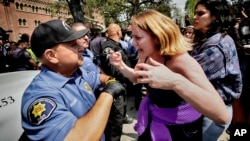
Police tangled with student demonstrators in the U.S. states of Texas and California while new encampments sprouted Wednesday at Harvard and other colleges as school leaders sought ways to defuse a growing wave of pro-Palestinian protests.
At the University of Texas at Austin, hundreds of local and state police — including some on horseback and holding batons — clashed with protesters, pushing them off the campus lawn and at one point sending some tumbling into the street. At least 20 demonstrators were taken into custody at the request of university officials and Texas Governor Greg Abbott, according to the state Department of Public Safety.
A photographer covering the demonstration for Fox 7 Austin was arrested after being caught in a push-and-pull between law enforcement and students, the station confirmed. A longtime Texas journalist was knocked down in the mayhem and could be seen bleeding before police helped him to emergency medical staff who bandaged his head.
At the University of Southern California, police got into a back-and-forth tugging match with protesters over tents, removing several before falling back. At the northern end of California, students were barricaded inside a building for a third day at California State Polytechnic University, Humboldt. The school shut down campus through the weekend and made classes virtual.
Harvard University in Massachusetts had sought to stay ahead of protests this week by limiting access to Harvard Yard and requiring permission for tents and tables. That didn't stop protesters from setting up a camp with 14 tents Wednesday following a rally against the university's suspension of the Harvard Undergraduate Palestine Solidarity Committee.
Students protesting the Israel-Hamas war are demanding schools cut financial ties to Israel and divest from companies enabling its monthslong conflict. Dozens have been arrested on charges of trespassing or disorderly conduct. Some Jewish students say the protests have veered into antisemitism and made them afraid to set foot on campus.
Columbia University averted another confrontation between students and police earlier in the day. The situation there remained tense, with campus officials saying it would continue talks with protesters for another 48 hours.
On a visit to campus, U.S. House Speaker Mike Johnson, a Republican, called on Columbia University President Minouche Shafik to resign "if she cannot bring order to this chaos."
"If this is not contained quickly and if these threats and intimidation are not stopped, there is an appropriate time for the National Guard," he said.
Shafik had set a midnight Tuesday deadline to reach an agreement on clearing an encampment, but the school extended negotiations, saying it was making "important progress."
On Wednesday evening, a Columbia spokesperson said rumors that the university had threatened to bring in the National Guard were unfounded. "Our focus is to restore order, and if we can get there through dialogue, we will," said Ben Chang, Columbia's vice president for communications.
Columbia graduate student Omer Lubaton Granot, who put up pictures of Israeli hostages near the encampment, said he wanted to remind people that there were more than 100 hostages still being held by Hamas.
"I see all the people behind me advocating for human rights," he said. "I don't think they have one word to say about the fact that people their age, that were kidnapped from their homes or from a music festival in Israel, are held by a terror organization."
Harvard law student Tala Alfoqaha, who is Palestinian, said she and other protesters want more transparency from the university.
"My hope is that the Harvard administration listens to what its students have been asking for all year, which is divestment, disclosure and dropping any sort of charges against students," she said.
Columbia encampment inspires others
Police first tried to clear the encampment at Columbia last week, when they arrested more than 100 protesters. The move backfired, acting as an inspiration for other students across the country to set up similar encampments and motivating protesters at Columbia to regroup.
On Wednesday about 60 tents remained at the Columbia encampment, which appeared calm. Security remained tight around campus, with identification required and police setting up metal barricades.
Columbia said it had agreed with protest representatives that only students would remain at the encampment and they would make it welcoming, banning discriminatory or harassing language.
On the University of Minnesota campus, a few dozen students rallied a day after nine protesters were arrested when police took down an encampment in front of the library. U.S. Representative Ilhan Omar, whose daughter was among the demonstrators arrested at Columbia last week, attended a protest later in the day.
A group of more than 80 professors and assistant professors signed a letter Wednesday calling on the university's president and other administrators to drop any charges and to allow future encampments without what they described as police retaliation.
They wrote that they were "horrified that the administration would permit such a clear violation of our students' rights to freely speak out against genocide and ongoing occupation of Palestine."
Netanyahu encourages police response
Israeli Prime Minister Benjamin Netanyahu lashed out at the pro-Palestinian demonstrations on U.S. college campuses in a video statement released Wednesday, saying the response of several university presidents has been "shameful" and calling on state, local and federal officials to intervene.
Students at some protests were hiding their identities and declined to identify themselves to reporters, saying they feared retribution. At an encampment of about 40 tents at the heart of the University of Michigan's campus in Ann Arbor, almost every student wore a mask, which was handed to them when they entered.
The upwelling of demonstrations has left universities struggling to balance campus safety with free speech rights. Many long tolerated the protests, but are now doling out more heavy-handed discipline, citing safety concerns.
At New York University this week, police said 133 protesters were taken into custody and all had been released with summonses to appear in court on disorderly conduct charges. More than 40 protesters were arrested Monday at an encampment at Yale University.
Columbia University demonstrators in talks with administration officials
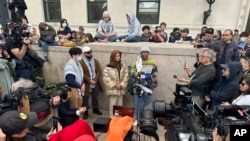
Officials at Columbia University were continuing talks Wednesday with student demonstrators from the Gaza Solidarity Encampment as the protest reaches a full week.
At 9:41 p.m. Tuesday, university President Nemat “Minouche” Shafik sent an email to the Columbia community setting a midnight deadline for an agreement to be reached about dismantling the encampment and dispersing the protesters.
“I very much hope these discussions are successful,” she wrote. “If they are not, we will have to consider alternative options for clearing the West Lawn and restoring calm to campus so that students can complete the term and graduate.”
As midnight passed, Columbia University Apartheid Divest posted a statement on X saying, “We refuse to concede to cowardly threats and blatant intimidation by university administration. We will continue to peacefully protest.”
The statement also said the university had threatened to call the National Guard. But after visiting the university earlier in the week, New York Governor Kathy Hochul said Tuesday she had no plans to deploy the National Guard.
As midnight approached on Tuesday, a student organizer announced that the deadline had been extended to 8 a.m. Wednesday.
At 4:09 a.m., the Office of the President sent an email saying the discussion deadline would be extended for 48 hours, given the constructive dialogue, and the university would report back on progress.
The email announced that leaders of the student encampment had agreed to remove a significant number of tents, get non-Columbia affiliates to leave the encampment and comply with New York Fire Department requirements. They also agreed to ensure that the encampment is “welcome to all” and to prohibit “discriminatory or harassing language.”
This development comes nearly a week after more than 100 students were arrested at the school on April 18, after Shafik authorized police to clear away protesters. Some of the students received suspension notices from the school.
Columbia’s action prompted an onslaught of pro-Palestinian demonstrations at other universities and responses from faculty and politicians.
Students at other campuses, such as Yale, Stanford and New York University, have also rallied around the Palestinian cause, calling for their universities to divest from companies with ties to Israel and for a cease-fire in Gaza. Many also have put up tent encampments on their campuses. About 150 students and faculty were arrested at New York University Monday night.
Columbia also announced Tuesday morning that classes on the Morningside main campus, where the protests are taking place, will be offered in a hybrid format for the remainder of the spring semester. The last day of classes is April 29.
- By VOA News
Paper: International students faced extra pandemic challenges
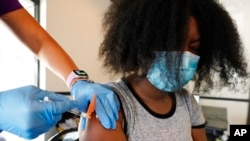
Astrobites, which describes itself as "a daily astrophysical literature journal written by graduate students in astronomy since 2010," focuses on the challenges international students faced during the COVID-19 pandemic.
It examines a paper published in the Journal of Comparative & International Higher Education entitled The Impact of the COVID-19 Pandemic on International Students in a Public University in the United States: Academic and Non-academic Challenges.
Read the Astrobites article here. (April 2024)
- By VOA News
15 cheapest US universities for international students

Yahoo!Finance has compiled a list of the 15 cheapest U.S. universities for international students.
Among them: Arizona State University, the University of North Carolina at Chapel Hill and Michigan State University.
Read the list here. (March 2024)




